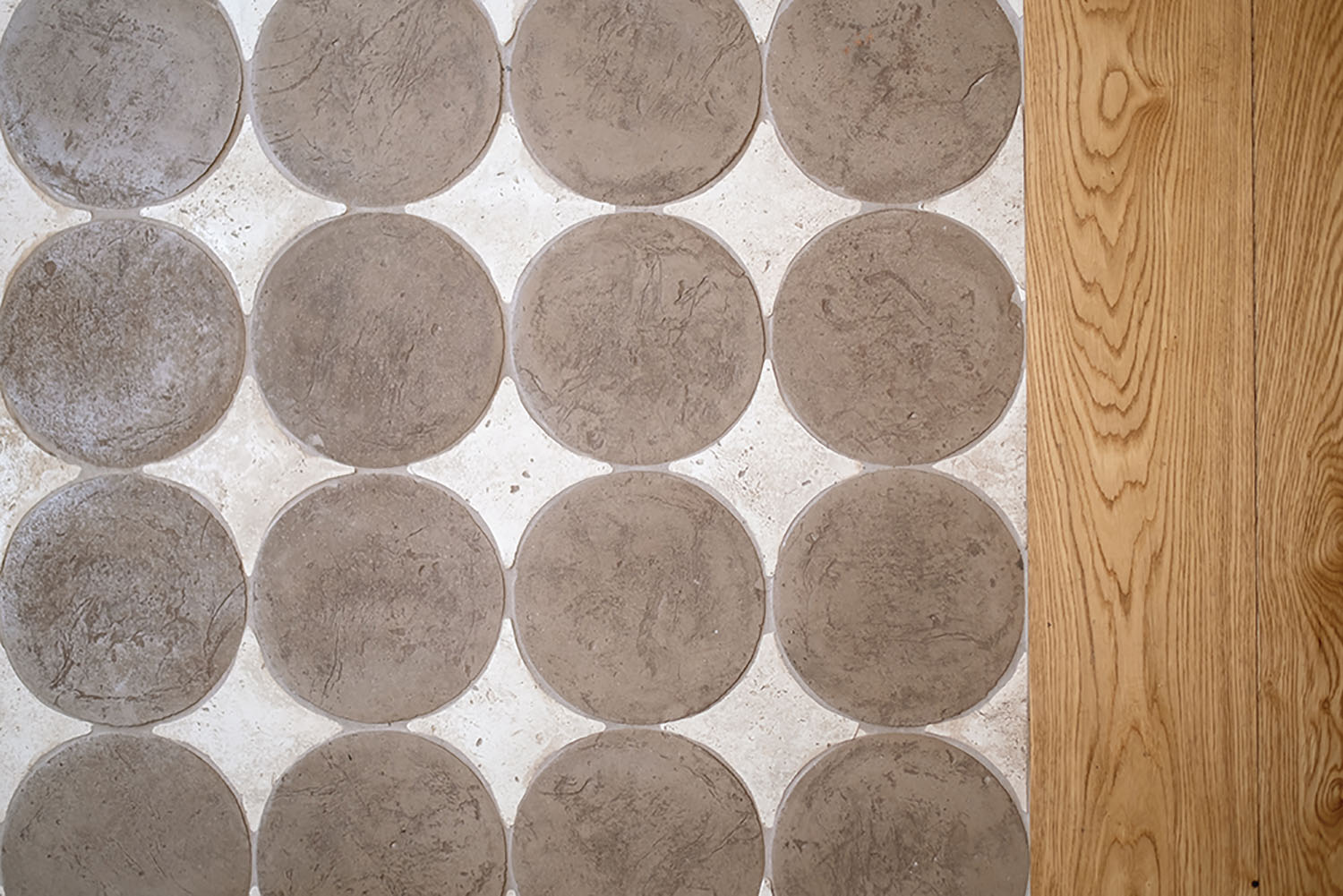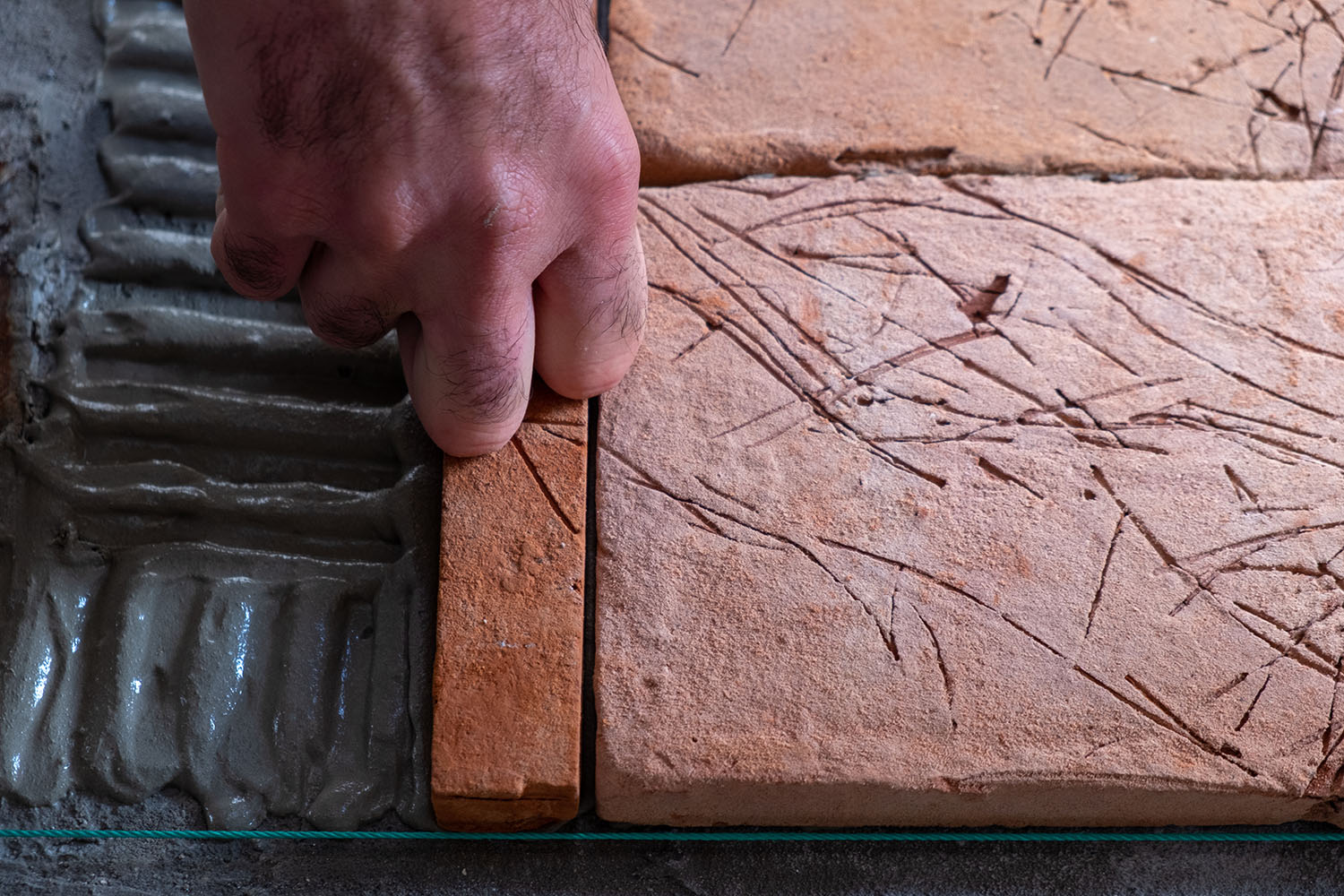Terracotta: where to use it
Starting from the kitchen to the bathroom to outdoor areas such as the terrace and garden.
Thanks to the creativity of Fangorosa’s craftsmen, terracotta turns out to be a complete material capable of marrying all kinds of living situations. Here is where to use the terracotta
The tradition of terracotta is as old as humanity. We are talking about one of the first materials in history to have been used for flooring and the production of utensils. In Italy and, in particular, in Tuscany, it was the Etruscan civilization that first valued and exalted its properties for the construction of buildings and the production of jars, amphorae and other artifacts designed for storing and cooking food.
Terracotta is often associated with ceramics. A connection that is not entirely wrong and stems from an etymological issue: the Greek word “kéramos” means the generic clay.
The differences are there, let us see them point by point:
- Terracotta is porous and comes from the firing of clay at a temperature of 980-990° C.
- Ceramics is a compact paste and its processing includes several steps
- The biggest difference lies in the sustainability of the materials, unlike ceramics which has a complex and industrial production process, terracotta is composed of clay water and fire
Today, terracotta represents one of the top choices among materials used to furnish the home.
And the reasons for this preference are several:
- the renewed interest in natural and sustainable materials;
- the ability of terracotta to give warmth and soul to a room;
- the versatility of use that allows it to enhance different contexts;
Here is where to use the terracotta, continue reading to discover all the possibilities.
The kitchen, especially in Italy, is one of the most used and lived-in rooms in the home. In such a context, the use of terracotta turns out to be ideal to make it as cozy as possible by adapting to different styles.
Where and how to use terracotta, depending on the style:
- For those who love mixes and want to try something new, Fangorosa offers different colors of Umbrian cotto through an unusual shape that sees the combination of round and star. An interesting possibility that allows you to preserve the character and prerogatives of a rural atmosphere without, however, sacrificing a touch of design.
- For those, on the other hand, who like to stand out, terracotta can be laid upside down.
- For a modern, designer siding, elegant colors such as black and white or black and gray can be matched.
- For the more daring, the “FUTURUSTIC” project, a terracotta that leaves its mark. Due to the insertion of an element during firing, pine needles for the “Promenade” collection, which leave an imprint on the cladding.
- For a more classic and rustic style, Fangorosa offers terracotta tile in classic colors, an effective and aesthetically pleasing choice for those who do not want to deviate too much from tradition.
But terracotta is also an option within more modern contexts. In this case, that of glazed Umbrian terracotta is a popular solution for enhancing a large space such as a floor or used as a backsplash for the kitchen.
Fangorosa offers the choice of a handcrafted product and is extremely versatile with the Birbante – square, available in multiple colors with an intense and charged color appearance. The variety of shades makes it possible to experiment with different solutions by making combinations also with other materials such as wood, marble, microcement and concrete.
Finally, glazed Umbrian terracotta is resistant, waterproof, therefore perfect for reacting to the stressful agents of a kitchen or bathroom.
In the most intimate room of the house, the bathroom, for example, terracotta can find placement on the wall or floor, inside the shower box.
One of the ideal locations for terracotta is outdoors such as, for example, a garden or terrace. Due to its characteristics it blends perfectly with nature and its elements. Especially traditional terracotta with its soft and warm colors can dialogue with different details such as green leaves and earth tones. To this purely aesthetic factor is also added a functional factor. The idea of body and compactness that terracotta conveys to touch and sight is not a sensation but reflects the real properties of the material.
The temperatures to which it is subjected during its formation make it endowed with great resistance to external agents such as rain or frost.
Except for kaolin white, on the other hand, which is not recommended for temperatures below zero.
The colors of Fangorosa terracotta are:
- Black Olive -Black bucchero of Etruscan tradition.
- Red Olive -Terraviva with sawdust on the surface
- White Olive – pure white kaolin clay
- Gray Olive – gray clay mixed with pink clay, which gives it a warmer tone
Preserving the natural beauty of terracotta surfaces is not difficult.
For routine cleaning, we have created Fangorosa Soap, a sustainable formula designed to prevent the formation of mold, bacteria, germs and pathogens through a sanitizing and shining action.
Read the following article to learn more about the step-by-step treatment.
Follow us on Instagram so you don’t miss all the updates




